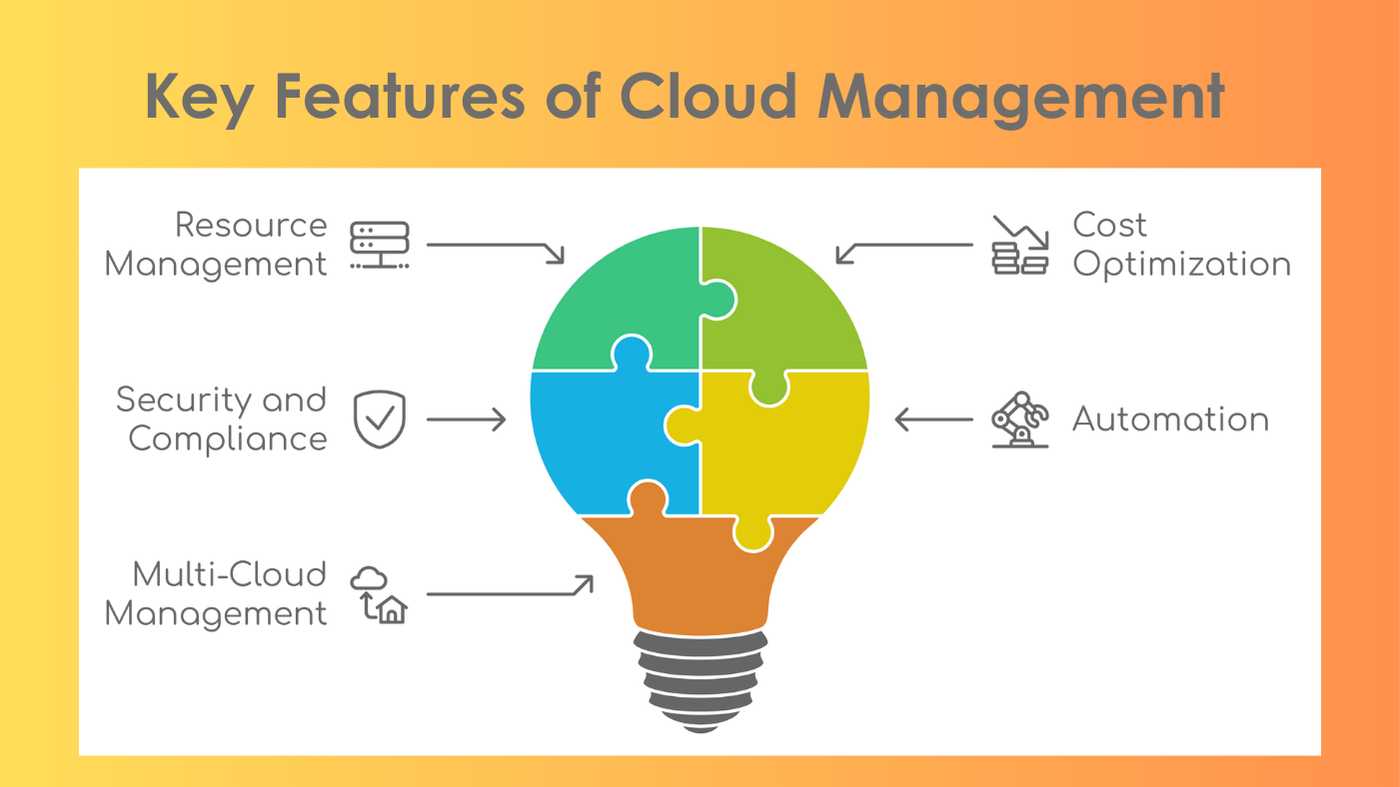Managing cloud infrastructure can become overwhelming, especially as businesses scale and adopt more complex systems. Whether you’re running a public, private, or hybrid cloud, keeping operations streamlined and secure is critical to staying competitive. This is where a Cloud Management Platform (CMP) becomes indispensable.
With 94% of enterprises now using cloud services, cloud adoption continues to rise. However, without proper cloud management, businesses can face inefficiencies and security risks. In fact, 81% of organizations report security challenges when managing multiple cloud environments.
“A Cloud Management Platform is essential for any organization looking to optimize and scale their cloud environment. It brings together automation, security, and visibility in one place, making complex cloud operations easier to manage.”
– Tim Timrawi, CEO, Sharktech
In this blog, we’ll guide you through the key factors to consider when choosing a CMP for your business, and why it could be an essential investment in your cloud strategy.
What you’ll find in this article:
- What is a Cloud Management Platform (CMP)?
- Why businesses use cloud management software
- Examples of cloud management platforms
What is a Cloud Management Platform?
A Cloud Management Platform (CMP) is a suite of software tools designed to help businesses manage and optimize their cloud infrastructure. CMPs provide centralized control over public, private, and hybrid cloud environments, allowing organizations to automate, monitor, and manage cloud services from a single interface.
The key purpose of a CMP is to simplify the complexity of cloud operations, ensuring security, efficiency, and cost management across all deployed cloud resources.
Cloud management platforms typically offer a range of functionalities, including:
- Automation: CMPs automate routine cloud tasks, such as resource provisioning and scaling, reducing manual intervention and potential human error.
- Monitoring: Businesses use CMPs to monitor performance metrics, cost usage, and security across cloud services, ensuring they remain optimized.
- Governance: A CMP ensures that compliance and governance policies are enforced consistently across all cloud environments.
Why Do Businesses Use Cloud Management Software? 3 Real-World Scenarios
1. Automating Resource Scaling
Many businesses struggle to manage fluctuating cloud demands, leading to inefficiencies and potential downtime. Manually adjusting resources takes time and can result in over- or under-provisioning.
A Cloud Management Platform automates this process by scaling resources based on real-time demand.
For example, a streaming service experiencing traffic spikes during live events can rely on a CMP to automatically add servers, ensuring smooth performance. Once the traffic subsides, the platform scales back resources, preventing over-provisioning and unnecessary costs.
2. Optimizing Cloud Costs
Nearly half of all businesses struggle to keep cloud costs under control and 33% overshoot cloud spend by 40%. Cloud management platforms serve to monitor and optimize resource usage, providing real-time visibility into costs, automating resource scaling, and identifying areas where spending can be reduced to prevent budget overruns.
Without a CMP, it’s easy to overspend on unused resources or misconfigured services. With a CMP in place, a company can visualize its cloud usage in real time and set cost thresholds. The platform provides insights into where resources are underutilized and helps the company right-size them, ensuring they only pay for what they need.
3. Managing Multi-Cloud Environments
With 62% of companies using a multi-cloud environment, managing multiple clouds can become complex, as each provider has its own tools and dashboards. This leads to fragmented visibility, inefficiencies, and contributes to cloud wastage.
A Cloud Management Platform simplifies multi-cloud management by offering a centralized interface to oversee all environments.
For instance, a global enterprise using AWS, Google Cloud, and Azure can use a multi-cloud management platform to monitor workloads, optimize performance, and maintain security standards across all platforms, reducing the complexity of managing multiple cloud providers individually.
Examples of Top Cloud Management Platforms
With so many options available, businesses need to choose the right cloud management tools that fits their unique needs. Below are some cloud management platform examples, each offering distinct features to help manage cloud environments more effectively.
| Platform | Best For | Key Features |
| Morpheus Data | Multi-cloud management | Full-stack integration, governance, and automation across AWS, GCP, and Azure |
| CloudBolt | Hybrid and multi-cloud deployments | Pre-built integrations, self-service provisioning |
| RedHat Cloud Suite | All-in-one cloud infrastructure management | OpenStack integration, lifecycle management, and scalability |
| CoreStack | Multi-cloud FinOps and governance | Real-time monitoring, cost optimization, and compliance tracking |
| VMware Aria | Hybrid cloud management | Multi-cloud monitoring, policy-based management, and automation |
| Azure Management Tools | Managing Azure and hybrid cloud environments | Automation, threat detection, and backup solutions |
| IBM Cloud Orchestrator | Policy-based cloud management | Service management, multi-cloud support, and backup capabilities |
| AppDynamics | Application performance monitoring for hybrid clouds | Full-stack management, real-time observability, and performance tracking |
| Terraform | Infrastructure as code for multi-cloud environments | Automated provisioning, event-based scaling, and multi-cloud resource management |
5 Tips for Choosing the Best Cloud Management Platform for Your Business
Finding the right cloud management platform can seem overwhelming with so many options out there.
Here are five practical tips to help you make an informed decision:
1. Evaluate Your Current Cloud Setup
Whether you’re using public, private, or a mix of both, your CMP needs to fit your setup. Look for a platform with cloud management tools that works smoothly across all your environments and lets you manage everything in one place.
2. Look for Strong Automation Features
Automating routine tasks can save your team a lot of time. Choose a CMP that handles provisioning and scaling automatically. This cuts down on manual work and reduces the risk of errors, keeping everything running efficiently.
3. Make Sure It Covers Security
Security should be a top priority. Find a platform that offers encryption, access controls, and compliance tracking to keep your data safe. Look for built-in governance tools that ensure you stay on top of industry regulations without extra headaches.
4. Check for Cost Management Tools
Cloud costs can spiral out of control fast. A good CMP will give you a clear picture of where your money is going, help you set budgets, and spot areas where you can save. The right cost management tools will help you keep cloud spending in check.
5. Choose a Platform That Can Scale with You
Your cloud needs today might not be the same in a year. Pick a CMP that can grow with you, handling bigger workloads and new cloud services without missing a beat.
| Learn more about effective cloud management strategies:
|
The Future of Cloud Management: Stay Ahead with the Right Tools
As cloud environments continue to evolve, businesses need robust tools to manage their infrastructure efficiently. Having the best cloud management tools by your side, along with cloud providers that actively help you lower cloud costs and gain control over your cloud, is an ideal strategy to get the most out of your cloud environment.
At Sharktech, we give businesses real options to experience optimal cloud services without the exorbitant costs and lack of control common to today’s hyperscalers. Before implementing new tools to manage your cloud, consider partnering with a cloud provider that makes cloud management easier in the first place.
Our public and private cloud solutions are open source, so you’ll always have the freedom to choose and control your tech stack. We also don’t lock you into lengthy contracts, and your monthly bills are fully transparent.
To learn more about cloud solutions that are naturally less complex and easier to manage, request a consultation with our team.





More to Read
The OpenStack Public Cloud Complexity Problem (And Why It’s Costing You)
Choosing the right cloud platform today is akin to trying to pick a needle
Oct
Make Growth and Security Part of Your Public Cloud Management Strategy
Managing today’s cloud infrastructure is no longer just about spinning up servers or
Sep
Leading Cloud Service Providers Explained: Types, Benefits, and How to Choose
94% of businesses now use a cloud solution in some form. Whether it’s
Aug
What is Public Cloud? A Simple Guide For Businesses
What is public cloud? It’s a model of cloud computing where infrastructure and
Jul
What is Cloud Migration? A Practical Guide for Modern Businesses
What is cloud migration? It’s the process of moving digital assets—like data, applications,
Jul
Why Some Businesses Choose Self-Managed Cloud Instead
Cloud computing has revolutionized how businesses deploy, manage, and scale their digital infrastructure.
Apr